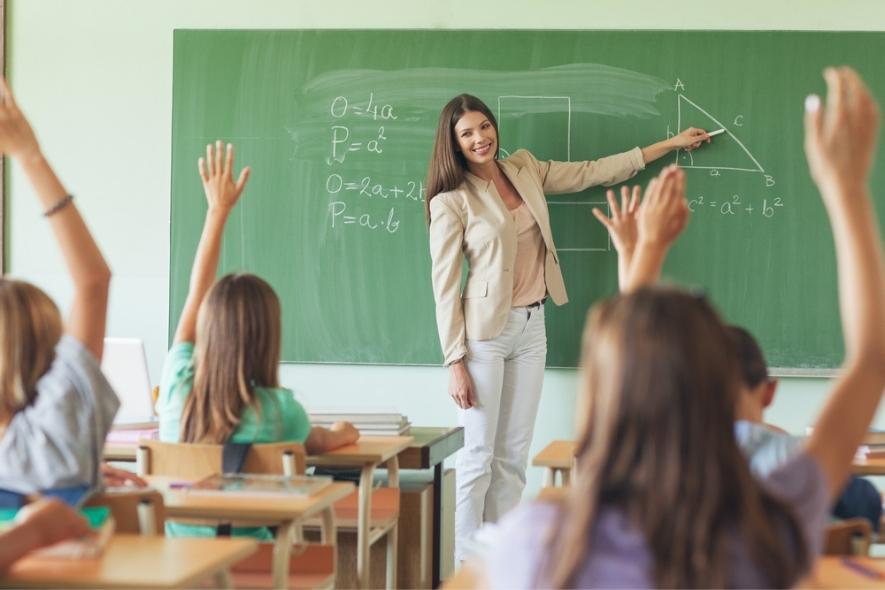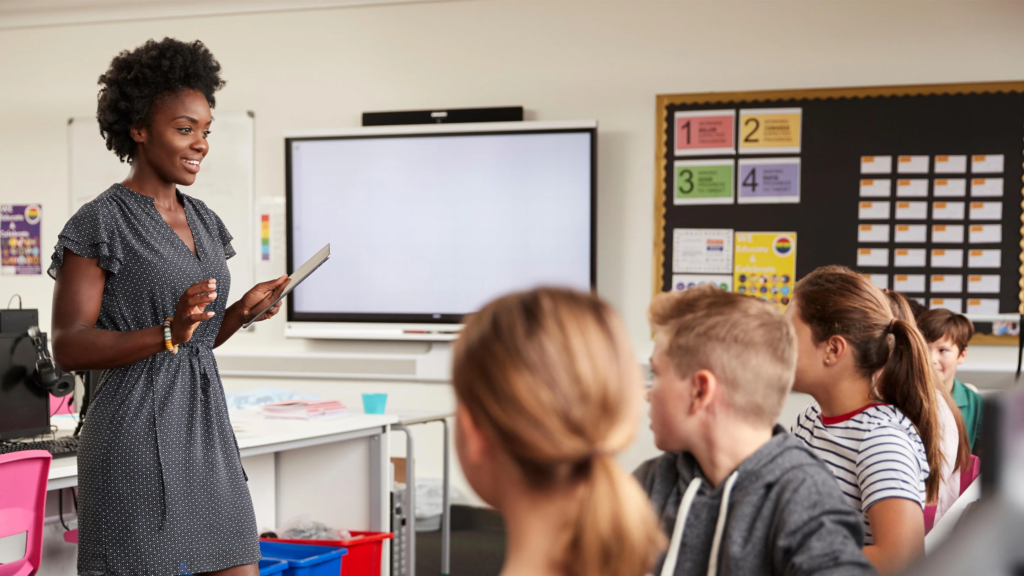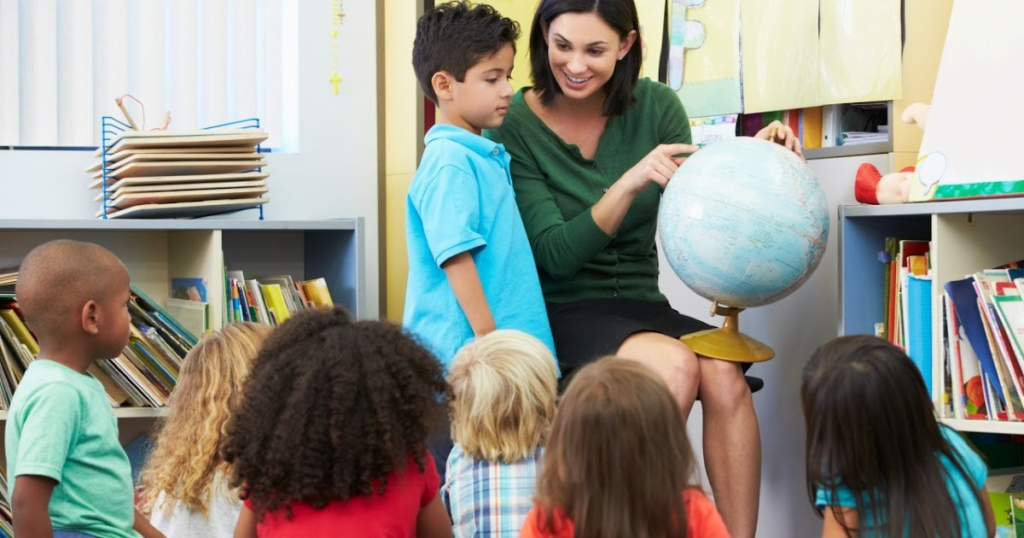Becoming a better teacher is an ongoing process that necessitates commitment and effort. Setting clear objectives, utilizing a range of teaching methods, providing constructive criticism, remaining current with educational trends, developing good relationships with students, creating a positive classroom environment, being flexible, and collaborating with other teachers are all part of the job. By implementing these suggestions, you can become a more successful and engaging teacher who assists students in reaching their full potential. Remember that each kid is unique, and adapting your approach to their requirements and learning styles can have a big impact on their academic progress and general well-being. You can make a positive influence in the lives of your children and become a better teacher if you have patience, tenacity, and a willingness to learn.
- Continuously Improve Your Own Education

As a teacher, it is important to stay current with the latest developments in your field. You can achieve this by attending conferences, workshops, and seminars or by pursuing further education. Continuous self-improvement is essential for any teacher looking to become better at their job. This means investing time and effort into learning and developing new skills, both in and out of the classroom. You can attend professional development courses, workshops, or conferences, read relevant articles and books, or pursue further education, such as a master’s degree or a certification program. By staying up-to-date with the latest developments in your field and expanding your knowledge and skills, you can bring new ideas and approaches to your teaching, engage your students in meaningful discussions, and ultimately improve the quality of education you provide.
2. Know Your Students

Knowing your students is essential for being a good teacher. Each learner is an individual with their own learning style, interests, and history. You can adjust your teaching approaches to match their needs, engage them in the learning process, and help them reach their maximum potential if you understand their specific strengths and shortcomings. You can get to know your pupils by interacting with them individually, conducting surveys, or holding class discussions. It’s also critical to pay attention to nonverbal clues like body language, which can reveal how your pupils are feeling and how interested they are in the class. You may establish a healthy learning environment by developing strong relationships with your students based on mutual respect and understanding.
3. Encourage Student Participation

Engage your students in the learning process by encouraging them to ask questions, share their thoughts, and participate in discussions. This will help them develop critical thinking skills and retain information better. In order to make your classroom more engaging and dynamic, encourage student engagement. You may establish a dynamic learning environment that encourages critical thinking and active learning by encouraging your students to ask questions, share their ideas and opinions, and participate in classroom discussions. You may help your students acquire key social and cognitive skills, as well as improve their academic achievement, by making student participation a regular component of your classroom culture.
4. Provide Constructive Feedback

Giving your students constructive feedback helps them identify areas where they need improvement and helps them grow as learners. Constructive feedback is an important aspect of education since it allows students to develop their skills and knowledge. It is critical to be specific, objective, and constructive while delivering comments. You may help your students build a growth mindset, take control of their learning, and become more confident and capable learners by assisting them in developing a growth mindset.
5. Make Learning Fun

Making learning enjoyable is an excellent method to improve your teaching skills and engage your pupils. Students are more likely to remember information and be inspired to study more when they love the learning experience. Learning may be made more enjoyable and engaging by incorporating games, puzzles, and interactive activities into your sessions. Learning may be made more entertaining and interactive by using technology resources such as films, online games, and interactive quizzes. Making learning enjoyable can help you establish a pleasant learning environment in which students are driven to study and reach their full potential.
6. Embrace Technology

In today’s digital age, embracing technology is a critical component of being a better teacher. Technology may give new and exciting methods to engage students, improve the learning experience, and make the classroom more efficient. To communicate with students and parents about assignments, due dates, and progress, use email, messaging applications, or a learning management system. Connect with other teachers using social media, online forums, or collaborative software to share materials and ideas. By adopting technology, you may improve your student’s learning experiences, increase your own efficiency and effectiveness as a teacher, and help pupils prepare for success in a digital world.
7. Be Flexible

Being flexible is an important trait for any teacher since it allows you to adapt to your pupils’ changing demands and circumstances. Recognize that each student has a unique learning style and be adaptable in your teaching approach to meet their needs. Be prepared to adapt your class plans as needed to respond to unexpected occurrences, student needs, or curriculum changes. Collaborate with other teachers, administrators, and support staff to uncover problems and make necessary adjustments. You may assist your pupils to attain their full potential by creating a more supportive and productive learning environment for them.
8. Encourage Collaboration

Encouraging collaboration is a powerful way to become a better teacher and improve student learning outcomes. Collaboration helps students develop important social and emotional skills, such as communication, teamwork, and problem-solving, while also reinforcing and expanding their academic knowledge. Assign group projects or collaborative activities that require students to work together to achieve a common goal. Use collaborative tools like online discussion forums, shared documents, or collaborative whiteboards to encourage remote collaboration.
9. Create a Positive Learning Environment

Creating a positive learning environment is essential for becoming a better teacher and promoting student success. A positive learning environment is one that is safe, welcoming, and supportive, where students feel comfortable and motivated to learn. Set clear expectations for behavior, academic performance, and class participation, and communicate these expectations to students. Design your classroom in a way that is inviting and conducive to learning, with comfortable seating, appropriate lighting, and displays that celebrate student achievements. By creating a positive learning environment, you can promote student success, improve student engagement and motivation, and create a more enjoyable and fulfilling teaching experience.
10. Continuously Reflect on Your Teaching Practice

Continuously reflecting on your teaching practice is a key way to become a better teacher. Reflection allows you to assess your teaching strategies, identify areas for improvement, and make necessary changes to enhance student learning. Continuously monitor and assess student learning outcomes to evaluate the effectiveness of your teaching methods and adjust them as needed. Keep a journal to reflect on your teaching experiences, challenges, and successes, and to document your growth and development as a teacher.











